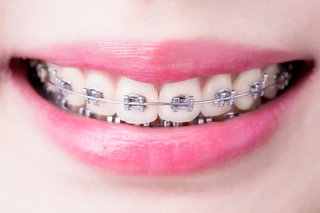Comprehensive Guide to Orthodontics Procedures for Remedying Dental Misalignments
In the world of orthodontics, the trip to achieving a completely aligned smile includes a myriad of treatments tailored to remedy oral misalignments. From traditional dental braces to undetectable aligners and even medical choices, the field of orthodontics uses a series of remedies to address varying levels of oral irregularities. Recognizing the ins and outs of each treatment, including their systems, advantages, and potential downsides, is important in making informed decisions regarding one's orthodontic treatment. As we browse with the comprehensive guide to orthodontic procedures for fixing oral misalignments, the intricate information of each technique will certainly unravel, clarifying the course toward a functional and unified dental placement.
Orthodontic Procedures Review

Along with typical braces and clear aligners, orthodontists might also recommend various other interventions like headwear, palatal expanders, or retainers to deal with certain alignment issues (invisalign). These treatments are tailored to each patient's unique needs and might include a mix of treatments to accomplish the preferred outcomes. Regular changes and monitoring are vital parts of orthodontic therapy to ensure progress is on track and to make any kind of required modifications along the road. By going through orthodontic procedures, patients can not just accomplish a straighter smile yet also enhance their general dental health and feature.
Conventional Dental Braces: Just How They Work
When considering orthodontic treatments for dental misalignments, typical dental braces stand apart as a time-tested method for correcting teeth placing. Typical braces consist of braces, cords, and bands that function with each other to use constant stress on the teeth, slowly moving them right into the desired positioning. The braces are connected to the teeth using an unique adhesive, and the wires are threaded via the braces. By changing the stress of the wires, orthodontists can control the instructions and force related to each tooth, guiding them into correct placement over time.
One trick aspect of exactly how traditional braces work is the process of bone renovation. As pressure is related to the teeth through the dental braces, the bone bordering the teeth is reshaped to support the new tooth settings. This makeover is necessary for the lasting stability of the fixed placement. People will certainly need routine changes at the orthodontist's office to make certain the braces proceed to apply the appropriate pressure for efficient teeth activity.
Unseen Aligners: Advantages And Disadvantages
Unnoticeable aligners provide a very discreet and practical choice to conventional braces for remedying dental misalignments. These clear, personalized trays are virtually undetectable when put on, making them an appealing choice for people seeking an extra cosmetically pleasing orthodontic therapy. One of the primary benefits of unseen aligners is their removability, permitting much easier maintenance of oral health compared to conventional braces. Clients can eliminate the aligners before consuming or cleaning their teeth, lowering the danger of food getting stuck in the appliance and simplifying the cleaning process.

Surgical Orthodontic Options
Surgical interventions in orthodontics present viable options for attending to complex oral misalignments that might not be successfully settled with standard orthodontic treatments. While typical braces and unnoticeable aligners can correct numerous orthodontic problems, particular situations require surgical intervention to accomplish ideal outcomes. Surgical orthodontic choices are generally advised for severe malocclusions, find out this here considerable jaw inconsistencies, and cases where the underlying bone structure requires alteration to achieve proper positioning.
One usual surgical orthodontic treatment is orthognathic surgical procedure, which entails repositioning the jaws to deal with useful problems such as problem chewing or speaking. This surgical procedure is commonly done in cooperation with an orthodontist that helps align the teeth before and after the treatment. Surgical orthodontics may likewise include procedures to reveal influenced teeth, remove excess periodontal cells, or reshape the jawbone to create a more harmonious face account.
Prior to taking into consideration medical orthodontic choices, patients undergo a comprehensive evaluation to figure out the necessity and potential benefits of such treatments. cumming invisalign. While surgical procedure might seem complicated, it can dramatically boost both the function and aesthetics of the smile in cases where standard orthodontic therapies fail
Retainers and Post-Treatment Care

Failing to abide with post-treatment care guidelines can result in regression, where the teeth gradually relocate back in the direction of their initial placements. Regular retainer wear, good dental health, and normal oral exams are important for maintaining the results achieved through orthodontic surgery and guaranteeing the long-term security of the fixed oral positioning.
Final Thought
In conclusion, orthodontic treatments supply various alternatives for dealing with dental misalignments. Surgical orthodontic alternatives are available for extra extreme misalignments. Overall, orthodontic procedures can successfully enhance oral health and wellness and aesthetic appearance.
As we browse through the comprehensive guide to orthodontic treatments for remedying oral imbalances, the intricate information of each approach will unfold, shedding light on the course towards a harmonious and useful dental alignment. - cumming invisalign
One of the most common orthodontic treatments is the use of dental braces, which are composed of metal brackets and cords that apply mild pressure to slowly move teeth into the preferred placement.When considering orthodontic therapies for oral imbalances, typical dental braces stand out as a reliable approach for remedying teeth positioning. Furthermore, undetectable aligners might not be suitable for complex orthodontic concerns that need even more significant teeth motion, as they are normally advised for light to modest instances. Retainers are personalized orthodontic tools developed to hold teeth in their corrected placements after the completion of orthodontic treatment.